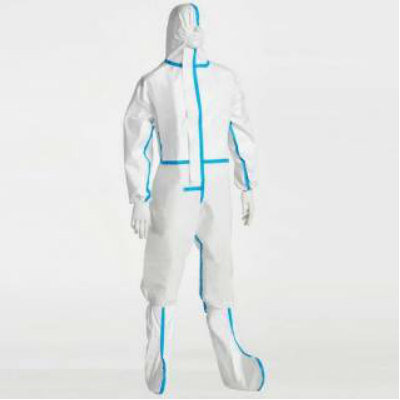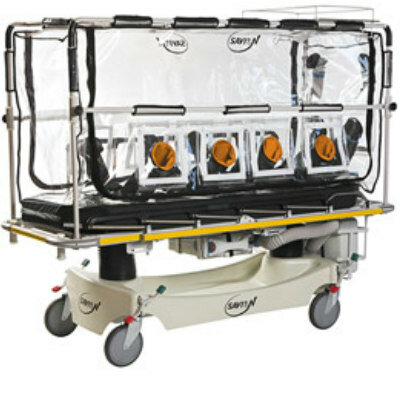Next-Gen POC Whole Blood Hemostasis System Recognizes Specific Needs of EDs and ORs 
|
By HospiMedica International staff writers Posted on 01 Nov 2022 |

Current hemostatic tests provide only a subset of needed information, or take too long to be useful in critical bleeding situations, forcing clinicians to use iterative transfusion protocols that do not account for the patient’s actual coagulation status. This approach leads to over-transfusion and transfusion of inappropriate products. Up to 60% of red blood cell (RBC) transfusions lack clinical justification. Further, blood products are costly, making up about 1-2% of a hospital’s budget. Hospitals around the world are thus seeking ways to reduce their transfusion rates to improve outcomes and reduce costs.
Now, a next-generation point-of-care (POC) hemostasis system leverages innovative medical-grade ultrasound technology to measure the coagulation properties of a whole blood sample. The system enables clinicians to deliver patient-centered coagulation therapy that improves care and optimizes blood product usage. With its rapid results, ease of operation, and dials screen for straightforward interpretation, it is the only whole blood hemostasis testing system specifically cleared for use in POC settings, such as operating rooms, emergency departments, and intensive care units.
HemoSonics, LLC’s (Durham, NC, USA) innovative Quantra hemostasis analyzer platform, based on patented SEER sonorheometry, enables fully automated, rapid point-of-care viscoelastic testing and gives physicians the results they need at the POC to make more informed decisions. SEER uses state-of-the-art ultrasound technology to measure clot stiffness (shear modulus of elasticity) over time using ultrasound-induced resonance. The Quantra system’s innovative closed-cartridge design requires no open-tube blood manipulation after sample collection and it automatically runs internal QC every eight hours and with every test. The Quantra system’s innovative ultrasound technology, proprietary closed-cartridge design, unparalleled ease of use, and ease of interpretation make it uniquely suited for use in critical or emergency care settings.
HemoSonics has now received 510(k) market clearance from the U.S. Food and Drug Administration (FDA) for the Quantra Hemostasis System with QStat Cartridge. The FDA clearance of the QStat Cartridge expands the Quantra System's indications for use to include trauma, and liver transplantation procedures. The QStat Cartridge assay, in addition to the System's already established QPlus Cartridge assay, increases Quantra's overall diagnostic capabilities to now cover the broadest range of clinical indications of any point-of-care hemostasis analyzer available in the U.S. market today.
"The Quantra Hemostasis System with QStat Cartridge is breaking new ground and leading innovation in the point-of-care and laboratory-based whole blood hemostasis testing market. Today's clearance significantly expands the clinical indications of the Quantra System, creating the greatest opportunity to address the critical unmet clinical needs of our healthcare provider partners and the patients that we serve," said Robert Roda, President, and Chief Executive Officer of HemoSonics.
"Point-of-care data is the answer to PBM-guided patient decisions. It is a triple win; Patients get improved outcomes, public health is improved, and cost savings are achieved," said Dr. Bruce Spiess, Medical Director of HemoSonics. "The Quantra Hemostasis System with QStat and QPlus Cartridges will assist more clinicians in determining which specific blood products are needed to rapidly treat individual patients. It has the potential to positively impact patient outcomes for hundreds of thousands of trauma patients and thousands of liver transplant recipients each year by optimizing blood product usage and conserving critically low blood supplies."
Related Links:
HemoSonics, LLC
Latest Point of Care News
- Critical Bleeding Management System to Help Hospitals Further Standardize Viscoelastic Testing
- Point of Care HIV Test Enables Early Infection Diagnosis for Infants
- Whole Blood Rapid Test Aids Assessment of Concussion at Patient's Bedside
- New Generation Glucose Hospital Meter System Ensures Accurate, Interference-Free and Safe Use
- Unique Quantitative Diagnostic System Enables Immediate Diagnosis and Treatment at POC
- POC Myocardial Infarction Test Delivers Results in 17 Minutes
- Novel Diagnostic Hand-Held Device Detects Known Biomarkers for Traumatic Brain Injury
Channels
Artificial Intelligence
view channel
AI-Powered Algorithm to Revolutionize Detection of Atrial Fibrillation
Atrial fibrillation (AFib), a condition characterized by an irregular and often rapid heart rate, is linked to increased risks of stroke and heart failure. This is because the irregular heartbeat in AFib... Read more
AI Diagnostic Tool Accurately Detects Valvular Disorders Often Missed by Doctors
Doctors generally use stethoscopes to listen for the characteristic lub-dub sounds made by heart valves opening and closing. They also listen for less prominent sounds that indicate problems with these valves.... Read moreCritical Care
view channel
Deep-Learning Model Predicts Arrhythmia 30 Minutes before Onset
Atrial fibrillation, the most common type of cardiac arrhythmia worldwide, affected approximately 59 million people in 2019. Characterized by an irregular and often rapid heart rate, atrial fibrillation... Read more
Breakthrough Technology Combines Detection and Treatment of Nerve-Related Disorders in Single Procedure
The peripheral nervous system (PNS) serves as the communication network that links the brain and spinal cord to every other part of the body. It consists of two parts: the somatic nervous system, which... Read moreSurgical Techniques
view channel
Hydrogel-Based Miniaturized Electric Generators to Power Biomedical Devices
The development of engineered devices that can harvest and convert the mechanical motion of the human body into electricity is essential for powering bioelectronic devices. This mechanoelectrical energy... Read moreWearable Technology Monitors and Analyzes Surgeons' Posture during Long Surgical Procedures
The physical strain associated with the static postures maintained by neurosurgeons during long operations can lead to fatigue and musculoskeletal problems. An objective assessment of surgical ergonomics... Read more.jpg)
Custom 3D-Printed Orthopedic Implants Transform Joint Replacement Surgery
The evolving field of 3D printing is revolutionizing orthopedics, especially for individuals requiring joint replacement surgeries where traditional implants fail to provide a solution. Although most people... Read more
Cutting-Edge Imaging Platform Detects Residual Breast Cancer Missed During Lumpectomy Surgery
Breast cancer is becoming increasingly common, with statistics indicating that 1 in 8 women will develop the disease in their lifetime. Lumpectomy remains the predominant surgical intervention for treating... Read morePatient Care
view channel
Surgical Capacity Optimization Solution Helps Hospitals Boost OR Utilization
An innovative solution has the capability to transform surgical capacity utilization by targeting the root cause of surgical block time inefficiencies. Fujitsu Limited’s (Tokyo, Japan) Surgical Capacity... Read more
Game-Changing Innovation in Surgical Instrument Sterilization Significantly Improves OR Throughput
A groundbreaking innovation enables hospitals to significantly improve instrument processing time and throughput in operating rooms (ORs) and sterile processing departments. Turbett Surgical, Inc.... Read more
Next Gen ICU Bed to Help Address Complex Critical Care Needs
As the critical care environment becomes increasingly demanding and complex due to evolving hospital needs, there is a pressing requirement for innovations that can facilitate patient recovery.... Read moreGroundbreaking AI-Powered UV-C Disinfection Technology Redefines Infection Control Landscape
Healthcare-associated infection (HCAI) is a widespread complication in healthcare management, posing a significant health risk due to its potential to increase patient morbidity and mortality, prolong... Read moreHealth IT
view channel
Machine Learning Model Improves Mortality Risk Prediction for Cardiac Surgery Patients
Machine learning algorithms have been deployed to create predictive models in various medical fields, with some demonstrating improved outcomes compared to their standard-of-care counterparts.... Read more
Strategic Collaboration to Develop and Integrate Generative AI into Healthcare
Top industry experts have underscored the immediate requirement for healthcare systems and hospitals to respond to severe cost and margin pressures. Close to half of U.S. hospitals ended 2022 in the red... Read more
AI-Enabled Operating Rooms Solution Helps Hospitals Maximize Utilization and Unlock Capacity
For healthcare organizations, optimizing operating room (OR) utilization during prime time hours is a complex challenge. Surgeons and clinics face difficulties in finding available slots for booking cases,... Read more
AI Predicts Pancreatic Cancer Three Years before Diagnosis from Patients’ Medical Records
Screening for common cancers like breast, cervix, and prostate cancer relies on relatively simple and highly effective techniques, such as mammograms, Pap smears, and blood tests. These methods have revolutionized... Read moreBusiness
view channel
Johnson & Johnson Acquires Cardiovascular Medical Device Company Shockwave Medical
Johnson & Johnson (New Brunswick, N.J., USA) and Shockwave Medical (Santa Clara, CA, USA) have entered into a definitive agreement under which Johnson & Johnson will acquire all of Shockwave’s... Read more
















